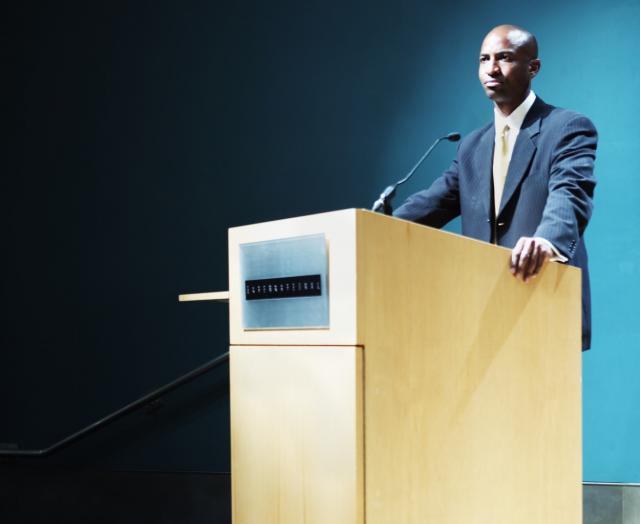
Every speaker wants to accomplish three things by the end of their talk:
- Have great stage presence
- Be well liked and accepted by their audience and
- Obtain additional speaking gigs or be asked back to speak the following year
Chris Anderson, Curator of TED (Technology, Entertain and Design) stated in the latest edition of Harvard Business Review that most speakers miss the boat because they are uncomfortable giving presentations. His mission is to help inexperienced presenters to become polished speakers. Anderson said his tips can be used for any presentation — whether it be a CEO addressing stakeholders at an annual meeting, a brand manager organizing a product launching event, or a start-up pitching their idea to a venue capitalist.
His suggestions may seem common sense in nature but it is always good to review what works and what doesn't when it comes to delivering an effective presentation.
FRAME THE STORY
Anderson stated the audience wants to listen to the presenter's story and be taken on a journey, so it is extremely important to know where to start and end the presentation. With TED, each speaker is given 18 precious minutes to tell their story.
First, start by asking two basic questions about the audience members:
- What do they already know about your subject matter?
- How much do they care about it?
Anderson stated once you know the answer to these two questions, the goal of any speaker's presentation is to:
- Introduce the topic,
- Explain why they care so deeply about it by presenting in-depth, vivid details and
- Convince the audience they should do the same.
BOTTOM LINE: Your speakers need to tell a deep-dive story they can effectively deliver in 18 minutes.
PLAN THE DELIVERY
Anderson stated there are 3 ways to deliver a talk:
- Read it from a script or teleprompter
- Develop a set of bullet points and show it on PowerPoint presentation equipment or
- Memorize it.
He stated the most effective talks were memorized, but he also realizes not everyone has the time to rehearse and remember. So the next best option above is #2 as long as your speaker doesn't read the slides.
BOTTOM LINE: Choose a presentation platform that can aid in the delivery of your speaker's story, not detract from it.
DEVELOP STAGE PRESENCE
There are many ways to keep the audience focused on the speaker. Here are four ways he said that can help any presenter increase their presence:
- Keep their lower body motionless (many speakers move their body from side to side or shift their weight while on stage)
- Make eye contact as often as possible with different parts of the room
- Breathe deeply before going on stage to combat nervousness and
- Be authentic.
BOTTOM LINE: Speakers need to find ways to continually connect with their audience.
PLAN FOR EFFECTIVE MULTIMEDIA
Here are Anderson's presentation services audio visual equipment tips:
- Don't use a slide deck as a substitute for notes
- Don't read the slides
- Use photographs, graphics and illustrations
- Explore alternatives to PowerPoint, such as Prezi
- Automatically advance your slides after so many seconds or minutes so the speaker doesn't hurry through the ending slides
- Use silence to your benefit
- Videos are effective especially if they are 60 seconds or less in length
- Don't self-promote
BOTTOM LINE: Use visually orientated slides that help resonate your message with your audience.
PRACTICE MAKES PERFECT
For TED, speakers need to prepare their talk for delivery 6 months before the TED conference and practice it in front of others for constructive feedback and criticism.
BOTTOM LINE: Practice before friends, family and smaller organizations. Take their criticism seriously and tailor the presentation to be more effective.
Are you event planning in California? Call AV Event Solutions for a complete quote on PowerPoint equipment including LCD projectors and screen rentals.
